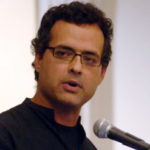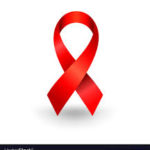Big Pharma Greed and Bad Government Policy Are Keeping the World from Ending AIDS
IN FOCUS, HEALTH, SCIENCE, 3 Dec 2018
Vijay Prashad | Independent Media Institute – TRANSCEND Media Service
December 1 marks the 30th World AIDS Day—and despite leaps forward in medicine and awareness in affluent parts of the world, it’s still a big problem elsewhere.
28 Nov 2018 – If you cure illnesses, said Goldman Sachs Vice President Salveen Richter, it will disrupt “sustained cash flow.” Far better to find medical treatments that provide some solace but that prolong illnesses. Even better if these treatments are both necessary and expensive. If you find a cure for an illness, then you will find—as Richter wrote in her analysis for Goldman Sachs—“a gradual exhaustion of the prevalent pool of patients.” That’s the worst thing imaginable for pharmaceutical companies and their investors. Keep the goose alive as long as it keeps laying golden eggs.
December 1st is World AIDS Day. In 1987, two public information officers at the United Nations’ World Health Organization (WHO) came up with the idea of such a day, which was then promoted by the UN from 1988 onwards. For a decade, World AIDS Day helped shape public consciousness about the ferocity of the disease. By 1990, almost 300,000 people died of AIDS (acquired immune deficiency syndrome) per year, while about 10 million people suffered from HIV (human immunodeficiency virus). World AIDS Day and activist groups fought to ensure that AIDS was not seen as a curse on homosexual men and that it was seen as both preventable and curable. This was an enormous burden, given the homophobia in society and the cuts to public health that states around the world were being forced into by the policy framework of the International Monetary Fund (IMF).
By 2018, 30 years after the origin of World AIDS Day, it is assumed that such concern is anachronistic. There is a sense that homophobia is less virulent and that the health care industry—both the pharmaceutical and medical sides—have taken hold of this epidemic. By last count of the WHO, more than 70 million people have been afflicted with the HIV virus, and by the end of 2017, 36.9 million people live with the HIV virus (under 1 percent of the world’s population). It is true that in many parts of the world, the HIV virus has been brought under control by technologies of prevention and of care. Part of this is because the health care infrastructure in the affluent world has not been totally devastated and partly because the pharmaceutical industry has come up with successful drugs to contain the virus. This is—of course—not the case for the affluent world’s working poor, who are sapped by the evisceration of health care.
In other parts of the world—in Africa and Asia, for instance—the HIV virus continues to be very dangerous. On large parts of the African continent, 1 in 25 adults has the HIV virus—just above 4 percent of adults. These men and women make up two-thirds of all those people who carry the HIV virus. What is important to focus on is that they live in countries where the IMF has systematically undermined state-provided health care—particularly primary health care—and where the cost of the drugs to contain the HIV virus remains prohibitive. It might well be that in the affluent parts of the world one can be sanguine about the HIV-AIDS epidemic. But it is certainly not something to dismiss in large parts of the world where the states remain under pressure to cut costs and where pharmaceutical companies find human bodies upon whom to do test trials rather than to cure.
Right to Health
It has long been the hope of human beings that preventable diseases should be eradicated by the use of changes in behavior and by the use of medicines. Every Indian child in the 1970s remembers the government posters that urged people to boil their water and to get vaccinated. It was thought that primary health care and education about health would pave the way toward a healthier world. At the 1978 World Health Organization conference at Alma Ata (USSR), governments of most countries said that by the year 2000 the level of health will permit people “to lead a socially and economically productive life.” It was underlined that “primary health care is the key to attaining this target as part of development in the spirit of social justice.”
Since 1978, the United Nations General Assembly has regularly argued—as it did in 2012—for “universal access to affordable and quality health-care services.” But the policy framework pushed on the majority of the countries of the world went in the other direction. The focus on the bad policy choices pushed on these countries should have been laser-sharp after the Ebola outbreak of 2013-2016 in West Africa. An important study in the Lancet (2015) found that in the three countries hit hardest by the outbreak—Guinea, Liberia and Sierra Leone—IMF policies had forced the governments to undermine their health care delivery services. The study found that in Sierra Leone, the IMF policies had severely reduced public sector employees. Between 1995 and 1996, the IMF required the state to cut 28 percent of its employees, including those in the health delivery sector. Stunningly, the WHO found that Sierra Leone’s community health care workers fell from 0.11 per 1,000 (in 2004) of the population to 0.02 per 1,000 (in 2008). This was the absolute antithesis of the Alma Ata Declaration.
Last week, in Savar, Bangladesh, the delegates assembled for the Fourth People’s Health Assembly. They came from far and wide, arguing for a return to the dynamic of which the Alma Ata Declaration was a part. The situation is now at an emergency footing, with public health institutions virtually destroyed and with plunder by pharmaceutical companies a normal situation. The WHO and World Bank found that by 2010, nearly 808 million people had incurred “catastrophic spending on health” because of the costs of drugs and because of the privatization of health care.
There is virtually no outrage at the IMF policy framework that destroys the health care infrastructure in the Global South. Saccharine pop-star humanism that begins with Bob Geldof’s Do They Know It’s Christmas (1984) merges with the equally syrupy tech-philanthropy of the Bill and Melinda Gates Foundation (2000) to throw a shroud over the African continent. Nothing that Bono and Bill can do undermines the sharp edge of IMF policy and the theft of Africa’s riches by monopoly firms (including those mining companies that provide the raw materials for the computers that made Bill Gates his wealth).
Return of AIDS
Earlier this year, in April, the UN General Assembly heard the summary of a report on the need for urgency regarding the return of AIDS. Even though AIDS deaths have declined since 2010 by a third, there has been an uptick in the number of deaths. This is of concern. Serious-minded public health specialists worry that this rise in AIDS deaths has come as health infrastructure has been weakened and as pharmaceutical companies continue to charge absurdly high prices for HIV-AIDS drugs.
The same month, in April, ACT UP (AIDS Coalition to Unleash Power)—which was founded in 1987—held a protest in New York City against Gilead Sciences, a monopoly pharmaceutical company. The drug in question for ACT UP is Truvada, a drug that reduces the chances of HIV infection. ACT UP says that a course of Truvada costs Gilead about $6/month to manufacture, but it charges patients an astronomical $1,500/month. What is scandalous is that the research for this drug was funded not by Gilead but by public funds and by philanthropists.
When a Goldman Sachs analyst says that the point is to make money from illness, she is merely mirroring the reality of the brutishness of capitalism. Serious conversations need to take place about the way in which monopoly pharmaceutical firms draw public funds to protect themselves from risk and then charge high prices to make astronomical profits. Questions need to be asked about the IMF policy space that makes it impossible to detect the virus and even harder to care for its victims.
It’s not enough to wear a ribbon on World AIDS Day. Go out onto the streets with a group of friends. Carry a sign. Let it say: More Public Health and Cheaper Drugs. If you want to end HIV-AIDS by 2030, the prescription is as simple as that.
_______________________________________________
 Vijay Prashad is an Indian historian, editor and journalist. He is a writing fellow and chief correspondent at Globetrotter, a project of the Independent Media Institute. He is the chief editor of LeftWord Books and the director of Tricontinental: Institute for Social Research. He is the author of 18 books, including Arab Spring, Libyan Winter (AK Press, 2012), The Poorer Nations: A Possible History of the Global South (Verso, 2013), Red Star Over the Third World (LeftWord, 2017) and The Death of the Nation and the Future of the Arab Revolution (University of California Press, 2016).
Vijay Prashad is an Indian historian, editor and journalist. He is a writing fellow and chief correspondent at Globetrotter, a project of the Independent Media Institute. He is the chief editor of LeftWord Books and the director of Tricontinental: Institute for Social Research. He is the author of 18 books, including Arab Spring, Libyan Winter (AK Press, 2012), The Poorer Nations: A Possible History of the Global South (Verso, 2013), Red Star Over the Third World (LeftWord, 2017) and The Death of the Nation and the Future of the Arab Revolution (University of California Press, 2016).
DISCLAIMER: The statements, views and opinions expressed in pieces republished here are solely those of the authors and do not necessarily represent those of TMS. In accordance with title 17 U.S.C. section 107, this material is distributed without profit to those who have expressed a prior interest in receiving the included information for research and educational purposes. TMS has no affiliation whatsoever with the originator of this article nor is TMS endorsed or sponsored by the originator. “GO TO ORIGINAL” links are provided as a convenience to our readers and allow for verification of authenticity. However, as originating pages are often updated by their originating host sites, the versions posted may not match the versions our readers view when clicking the “GO TO ORIGINAL” links. This site contains copyrighted material the use of which has not always been specifically authorized by the copyright owner. We are making such material available in our efforts to advance understanding of environmental, political, human rights, economic, democracy, scientific, and social justice issues, etc. We believe this constitutes a ‘fair use’ of any such copyrighted material as provided for in section 107 of the US Copyright Law. In accordance with Title 17 U.S.C. Section 107, the material on this site is distributed without profit to those who have expressed a prior interest in receiving the included information for research and educational purposes. For more information go to: http://www.law.cornell.edu/uscode/17/107.shtml. If you wish to use copyrighted material from this site for purposes of your own that go beyond ‘fair use’, you must obtain permission from the copyright owner.
Read more
Click here to go to the current weekly digest or pick another article:
IN FOCUS:
- Mineral Deal Gives the US Total Control over Ukraine's Future
- Trump and Putin’s Unofficial Covert Alliance
- We Will Not Move One Solitary Inch Towards Your Armageddon
HEALTH:
- U.S. Terminates Funding for Polio, H.I.V., Malaria and Nutrition Programs Around the World
- Autism, Made in the USA
- Big Pharma Is a Big Menace to Global Health
SCIENCE:
